After testing many times by the ears and multitester the amp, I have bought a oscilloscope and signal generator to find why the pianos sound bad .
I think that the problem is “maybe” the OPT but before to buy a new OPT I would like to know your opinion. why I have a big change with or without the speaker ( I test with two different speaker a two ways and one full range )
1 Square wave measures of the preamp tube E280F are very good 20 to 20k
2. S W measures of the e280f to anode of the 211 are very good 20 to 20k
3. sinusoidal 20 to 20k are perfect 100% full amp
The problem begin when I measure the amp with the OPT, and in special when connect the speaker to give the poor measures.
TEST 1 the pics bellow. With 8 Ohm resistor to the secondary OPT
1khz

5khz
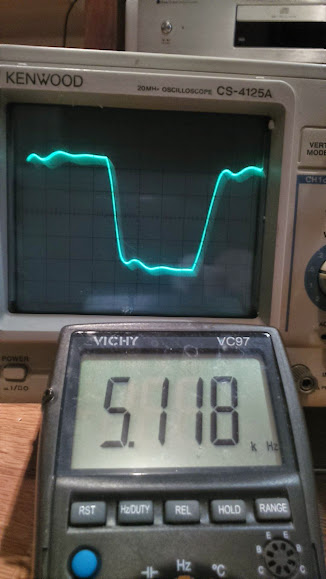
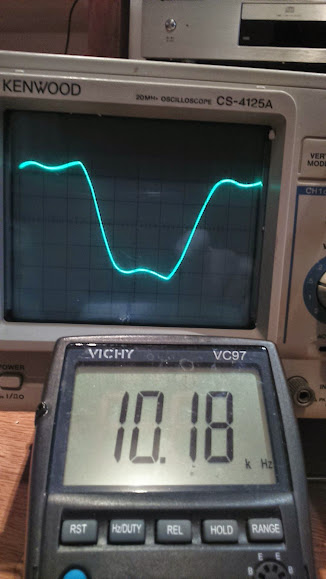
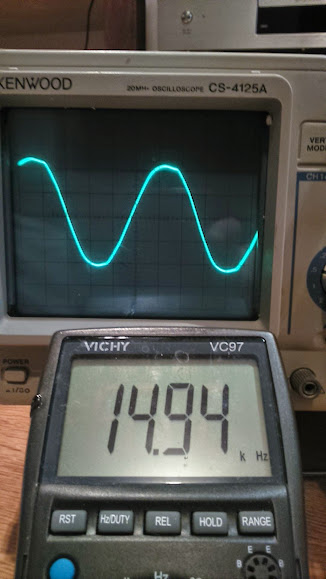
TEST.2 pics below with the secondary connect to the speaker
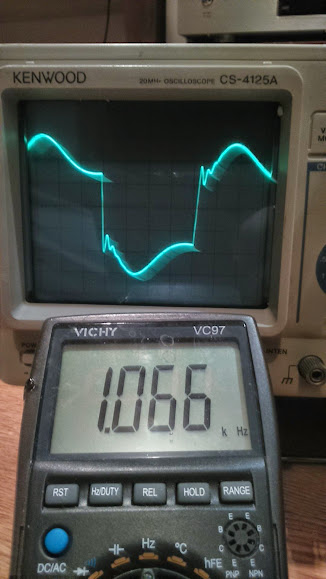
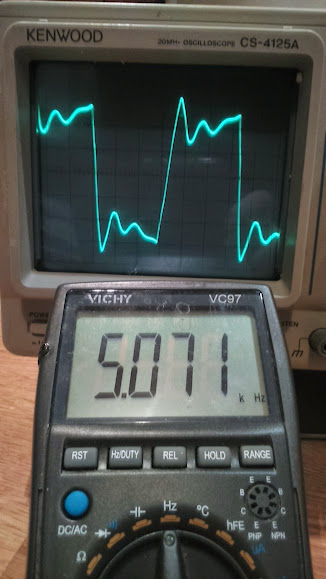

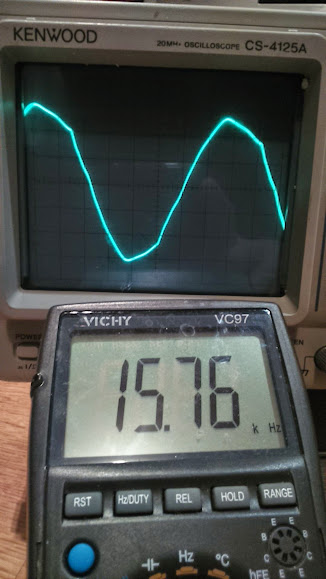
Happy Christmas
I think that the problem is “maybe” the OPT but before to buy a new OPT I would like to know your opinion. why I have a big change with or without the speaker ( I test with two different speaker a two ways and one full range )
1 Square wave measures of the preamp tube E280F are very good 20 to 20k
2. S W measures of the e280f to anode of the 211 are very good 20 to 20k
3. sinusoidal 20 to 20k are perfect 100% full amp
The problem begin when I measure the amp with the OPT, and in special when connect the speaker to give the poor measures.
TEST 1 the pics bellow. With 8 Ohm resistor to the secondary OPT
1khz
5khz
TEST.2 pics below with the secondary connect to the speaker
Happy Christmas
Last edited:
It appears that the impedance curve of your speakers is strongly affecting the amplifier's output. If so, there are two fixes -
Increase the amp's damping factor. Run the speaker of a lower impedance tap, operate in triode mode, or increase global feedback.
Or flatten the speaker's impedance curve by adding a compensating network across its terminals.
Happy Holidays!
Increase the amp's damping factor. Run the speaker of a lower impedance tap, operate in triode mode, or increase global feedback.
Or flatten the speaker's impedance curve by adding a compensating network across its terminals.
Happy Holidays!
First step. Is this a feedback or non-feedback amp.
I guess feedback.
It makes a huge difference in terms of what you see and what you expect.
Second. Post the schematic.
Since you say nothing about the amp it is impossible to figure out much.
The square waves you present are not entirely unusual. Not optimal.
_-_-
I guess feedback.
It makes a huge difference in terms of what you see and what you expect.
Second. Post the schematic.
Since you say nothing about the amp it is impossible to figure out much.
The square waves you present are not entirely unusual. Not optimal.
_-_-
It appears that the impedance curve of your speakers is strongly affecting the amplifier's output. If so, there are two fixes -
Increase the amp's damping factor. Run the speaker of a lower impedance tap, operate in triode mode, or increase global feedback.
Or flatten the speaker's impedance curve by adding a compensating network across its terminals.
Happy Holidays!
May be a zobel network to flat speaker´s impedance curve can do something.Is easy to try.
Happy Xmas
No negative feedback connect.
The measure with speakers have been with two different speaker a two ways with zobel impedance correction and with one 5 inch mid woofer both give the same measures.
My surprise was when I see this test
SAC Thailand
Today will post the measures only the tubes without the OPT..
The measure with speakers have been with two different speaker a two ways with zobel impedance correction and with one 5 inch mid woofer both give the same measures.
My surprise was when I see this test
SAC Thailand
Today will post the measures only the tubes without the OPT..
You still have given no clue as to what it is you have there, other than a 211 in a SE amp.
It's pretty clear that the output iron has limitations in terms of bandwidth.
Probably has not much to do with how a piano sounds, unless it's got nasty looking harmonic spectra (which is possible).
There's nothing much to keep looking for - you can't put a square wave through a transformer and expect it to remain clean and square - not most transformers.
Your only solutions lie in replacing the output iron with far better iron and then perhaps modifying or altering the driver stage - but since you've not said what the amp consists of, there's not much anyone can say to help you.
_-_-bear
It's pretty clear that the output iron has limitations in terms of bandwidth.
Probably has not much to do with how a piano sounds, unless it's got nasty looking harmonic spectra (which is possible).
There's nothing much to keep looking for - you can't put a square wave through a transformer and expect it to remain clean and square - not most transformers.
Your only solutions lie in replacing the output iron with far better iron and then perhaps modifying or altering the driver stage - but since you've not said what the amp consists of, there's not much anyone can say to help you.
_-_-bear
Have Dave Slagle build you something, my square wave almost looks like a good transistor amp using his trannies.Your only solutions lie in replacing the output iron with far better iron and then perhaps modifying or altering the driver stage - but since you've not said what the amp consists of, there's not much anyone can say to help you.
_-_-bear
The waveforms shown are typical of a poorly designed S.E.T amp with insufficient driving capabilities and lousy (or mismatched) iron. About 80% of S.E.T zero-feedback amps I measured looks similar and have terrible measured characteristics once a real load is connected. Back to the drawing board and lab for a circuit re-design, and invest in a good quality transformer. (they aren't cheap). Without further informations about your amp (and a circuit diagram) this is only a guess play and nobody here can't really help you.
You still have given no clue as to what it is you have there, other than a 211 in a SE amp.
It's pretty clear that the output iron has limitations in terms of bandwidth.
Probably has not much to do with how a piano sounds, unless it's got nasty looking harmonic spectra (which is possible).
There's nothing much to keep looking for - you can't put a square wave through a transformer and expect it to remain clean and square - not most transformers.
Your only solutions lie in replacing the output iron with far better iron and then perhaps modifying or altering the driver stage - but since you've not said what the amp consists of, there's not much anyone can say to help you.
_-_-bear
This is more or less the schematic with the following changes:
Preamp tube E180F
CCS load with one 10m45s cathode 100R 220uf give a 1,6V
The rest without changes.
An externally hosted image should be here but it was not working when we last tested it.
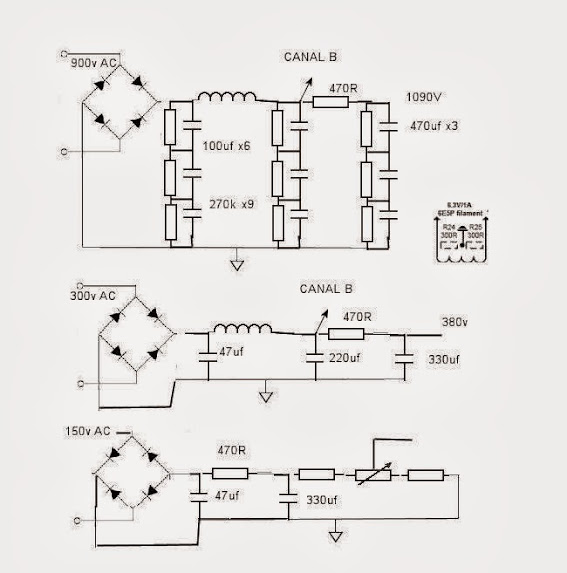
But I agree all that you say, if you see all square waves you will see that at 20hz to 1khz are as a good transformer. ( see the first post)
but the range finish at 12khz, I have spoke with the chinese factory and they have said that the primary is about 11k to 11,5k my 211 are working at 1180v and 60mA in this case will be better 8,7k + cheap transformer both giive at 12khz to 20khz bad respond, they say that can replace the primary to 8,7k. But maybe is a lost of time/money and will be better to buy Occidental brand. My friend have a 1638SEA with better measures in advance to 10khz.
The waveforms shown are typical of a poorly designed S.E.T amp with insufficient driving capabilities and lousy (or mismatched) iron. About 80% of S.E.T zero-feedback amps I measured looks similar and have terrible measured characteristics once a real load is connected. Back to the drawing board and lab for a circuit re-design, and invest in a good quality transformer. (they aren't cheap). Without further informations about your amp (and a circuit diagram) this is only a guess play and nobody here can't really help you.
Tubologic I agree too all that you say, today I put NFB R6k to the e180f cahode, the listen is better that without, but I don't the measure, maybe the e180f Ri 2k impedance don't help, when I have all more clear (thanks for your help) I have ready to change the e180f by two stages preamp ECL85, second stage strapped at triode give Ri 1k similar that my friend have with good result..
Consider trying a "parafeed" setup, which also would permit the use of "P-P" output iron.
Also, consider one or more means of direct coupling to the 211, which will permit A2 operation.
There's no substitute for good output iron.
Also, given the same winding technique, it may be expected that the transformer with the lower turns ratio may have a slightly better frequency response.
_-_-bear
EDIT: also, merely having feedback and not having sufficient bandwidth from the output iron will always result in a ringing of the
sort that you see, especially into reactive loads. You may find that the amp does not measure as well in terms of frequency response without feedback, but sounds better. So, perhaps adjust your circuit to operate without any loop feedback??
Also, consider one or more means of direct coupling to the 211, which will permit A2 operation.
There's no substitute for good output iron.
Also, given the same winding technique, it may be expected that the transformer with the lower turns ratio may have a slightly better frequency response.
_-_-bear
EDIT: also, merely having feedback and not having sufficient bandwidth from the output iron will always result in a ringing of the
sort that you see, especially into reactive loads. You may find that the amp does not measure as well in terms of frequency response without feedback, but sounds better. So, perhaps adjust your circuit to operate without any loop feedback??
Last edited:
One friend say that order to the factory new wiring because is not only to reduce the primary impedance to 8,5k maybe the wiring is the main problem, the Chinese factory normally wiring in the easy and cheap way :
ssssssssssssss Secondary
PPPPPPPPPP Primary
PPPPPPPPPP
PPPPPPPPPP
When will be better to new wiring design:
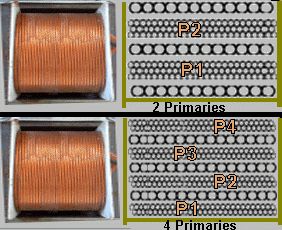
what do you think?
In all cases I will change to CCS mu follower low Z, now is high Z
Bear the parafeed circuit not have space in the amp to put two new chokes, but is interesting to reduce the DC load in the OPT
ssssssssssssss Secondary
PPPPPPPPPP Primary
PPPPPPPPPP
PPPPPPPPPP
When will be better to new wiring design:

what do you think?
In all cases I will change to CCS mu follower low Z, now is high Z
Bear the parafeed circuit not have space in the amp to put two new chokes, but is interesting to reduce the DC load in the OPT
Last edited:
You can't expect good results with little or no interleaving. OK for wireless receivers and guitar amps. For hi-fi you need significant (=expensive) interleaving; I believe some use 16 way interleaving.celsius235 said:One friend say that order to the factory new wiring because is not only to reduce the primary impedance to 8,5k maybe the wiring is the main problem, the Chinese factory normally wiring in the easy and cheap way :
ssssssssssssss Secondary
PPPPPPPPPP Primary
PPPPPPPPPP
PPPPPPPPPP
Last edited:
- Status
- This old topic is closed. If you want to reopen this topic, contact a moderator using the "Report Post" button.
- Home
- Amplifiers
- Tubes / Valves
- 211 amp test. Square wave measures
